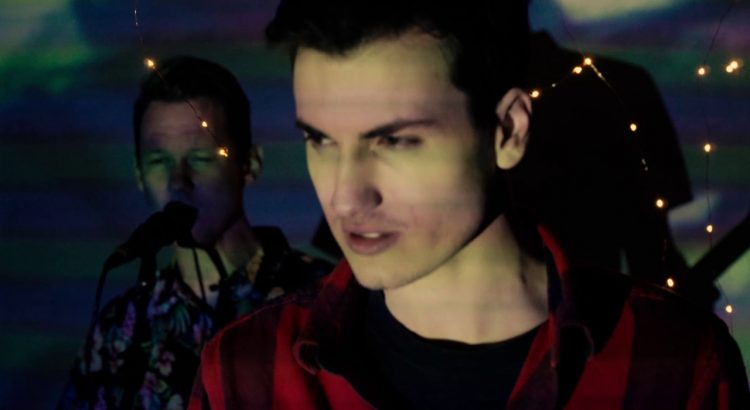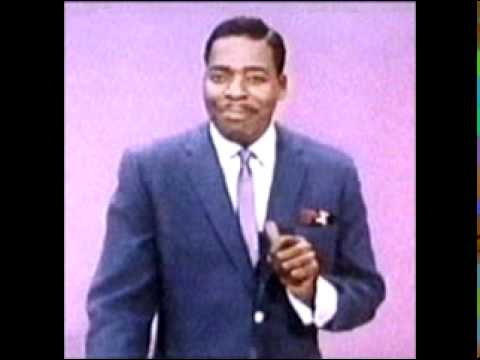
**Big ‘ol spoilers in this review**
Fan reactions to the conclusion of “Twin Peaks: The Return” on Showtime has been mixed. From my unscientific survey of a number of discussion boards on the show, there’s a lot of frustration with Sunday’s series finale. Some folks did enjoy the ride and thought Lynch and Frost took viewers on a weird journey that shouldn’t succumb to a conventional ending. Others were downright angry at Lynch and Frost for manipulating them in nefarious ways. But that’s the problem and brilliance of Lynch and Frost. Their work on “Twin Peaks” defied expectations, played with conventions, and reoriented TV storytelling for the better.
Part of why Lynch and Frost were able to pave new ground in storytelling and filmmaking is because Lynch is essentially a mixed-media artist — and not just a “director.” He paints, he sculpts, he writes and performs music, he draws oddball comic strips, and, yes, he’s a filmmaker/TV director. Lynch is many things, but he’s not a hack who does the expected thing, plays it safe, and satisfies movie studios or TV producers in their quest to make investors and advertisers happy. He’s interested in the way in which art (writ large) can provoke larger conversations about what it all means. He’s not going to give you the answers, but he’ll supply you with enough imagery and sound that you can take away what you will from his work. So, for those who like to dissect shows to the point where they can predict what’s going to happen before it happens, Lynch and Frost had one final trick to pull out of their magician’s hat — and it wasn’t a rabbit. Instead, we got a dose of ambiguity with a heaping helping of WTF.

If there’s a Lynchian theme that’s been part of his work since “Blue Velvet” it’s the idea that we live in multiple worlds. What is thought of as a given (i.e., the placid suburb of Lumberton in “Blue Velvet,” the quirky town of Twin Peaks, or the “Gosh! Golly!” fantasy of the first half of “Mulholland Drive”) are just layers of what lies beneath, beyond, or between. Which is the real world and which is a dream, another dimension, or timeline? Those are the doors and walls that Lynch (mostly) keeps separated. We get glimpses, snapshots, and mirror images of those worlds, but rarely do we get answers. “Twin Peaks: The Return” is about those multiple worlds. Doppelgangers abound, realities shift, time is not linear, and what we’re viewing may all be a dream. That makes the show frustrating for those who went on this journey, waited patiently through episodes that moved a glacial pace, were given many plotlines, but only got partial resolutions to the narrative threads.

Episodes 17 and 18 did two things for the viewer: it brought a sense of conclusion to the fate of Dougie Jones — who was the focus of so much of the series. Dougie, as those who have watched the show know, is a doppelganger created by another doppelganger of Agent Cooper. Dougie is an “insurance policy” created by Agent Cooper’s doppelganger, Mr.C (aka Dark Coop). Dark Coop is on a quest to find coordinates that will lead him to something greater than his fate that awaits him in the Black Lodge. For the most part, it works. When Agent Cooper is allowed to leave the Black Lodge after being stuck there for 25 years, he replaces Dougie and his life. But Cooper/Dougie is a man unable to fully communicate or understand the world. His ability to only repeat the last word he’s heard made for some comical moments, but the Dougie storyline got bogged down as a Johnny One-Note character. However, his return home at the end of the series put a fine point on the how Lynch believes in the power of love. Another plotline centered on the showdown between the forces of evil (Dark Coop and Bob) and the forces of good in Twin Peaks (Sheriff Truman, Lucy, Andy, Freddie, the Mitchum brothers, Naido/Diane, and Hawk). This part of the story had the most conventional resolution — well, I should say conventional for David Lynch.

The other plotline about finding and saving Laura saw Agent Cooper traveling to another dimension to meet with Phillip Jeffries where the key to the next part of his journey was revealed in the number 8 — which, when you lay on its side, is the symbol for infinity ∞. For Cooper, it seems he’s locked in an infinite loop of time where realities shift, and names change, but faces remain the same. His desire to go back to a specific date (February 23, 1989) is crucial for him because he hopes change the fate of Laura Palmer by saving her from the destructive path and eventual death at the hands of her father (who is possessed by Bob). Jefferies has the ability to send Cooper back to the date he wishes to go back to, but Jefferies also says things like: “Say hello to Gordon if you see him. He’ll remember the unofficial version. This is where you’ll find Judy.” “Unofficial version” of what? The first “Blue Rose” case? And Judy? Well, Judy is a diner in the next episode, so…Judy or Jiāo Dài is an extreme negative force in the diner? Jefferies also adds: “There may be… someone. Did you ask me this? There it is. You can go in now. Cooper remember.” Who is that someone? Did Cooper ask about that “someone?” And what does he have to remember? Jesus, this is more cryptic than the conversations at The Bang Bang Club by characters we never see again — and slightly more frustrating than finding Billy.
When we get to episode 18 (the finale), it becomes a strange road trip. I should note, that from here on out, I’ll be recapping the episode — and that means a ton o’ spoilers abound.
First, Cooper goes back to the Black Lodge where the one-armed man has the same conversation he did in the first episode (asking the question: “Is it future…or is it past?”) the evolved Arm also asks the same questions, but adds, “Is this the story of the little girl who lived down the lane?” This is the same question Audrey asked earlier is the series, but we don’t know what became of her — other than she was transported from The Bang Bang Club to a white room where she wanted to know what the hell was happening (Yeah, so do we!)
From there, Cooper is allowed to leave the lodge and appears from behind the red curtains in a grove of sycamore trees to Diane waiting for him. But, like Cooper says at the end of the episode, I wanted to know what year it was. Diane and Coop are clearly aware of the shift in realities, and Diane wants to know if it’s really Cooper. He says yes, and asks the same of Diane (who also says yes). But how do we know they are who they say they are?
Next, the two of them are driving down a two lane highway in a car from the late 50s/early 60s (Again…what year is this? The FBI doesn’t have vehicles like this in their fleet). They eventually come to a point where they are exactly 430 miles from their starting point (Presumably Twin Peaks). This is a portal where they can cross over to another reality, and when they do their identities may change — how much, they aren’t certain. What does happen, though, is Cooper’s unending mission to find Laura and save her does not change. Diane makes the trip with Coop, and when they arrive at their new reality, they have one of the most uncomfortable sex scenes I’ve seen depicted on screen (big or small). Diane on top, looking more pained than pleasured, while Cooper just lays there unmoved by the experience. Unlike when Dougie/Coop had sex with Diane’s half-sister Janey-E (which resulted in ecstasy for both of them) Diane acts as if she’s molding Cooper into another person while looking up toward the ceiling.
When the deed is done, and Coop awakes in the morning, he’s alone in a different motel (seems he and Diane “crossed over” yet again into another timeline). There’s a note addressed to “Richard” from “Linda” saying that she doesn’t recognize him and that it’s not going to work anymore. She says she’ll never see him again, and that’s that. Cooper eventually exits the motel room, gets into a different car from the one he was driving before they “crossed over” and is now in Odessa, Texas. While driving through the town, Cooper sees a diner called Judy’s, where he enters and asks about “the other waitress” who works there. The waitress serving him coffee (which he drinks without his usual glee) says that the other waitress has the day off (in fact, she’s been off for three days). As Cooper is sipping his coffee, he gets into a fight with some locals at the diner who are harassing the waitress. He shoots one in the foot, grabs their guns and deposits them in a deep fryer. Coop gets the address of “the other waitress” and while parked outside of her house, notices a power pole with the number 6 on it (the number 6 on power poles has become synonymous with Bob and his crew’s ability to transport themselves to other locations via electric current).
After knocking on the door, a woman who looks like Laura Palmer answers, and says her name is Carrie Page. Cooper convinces her to accompany him to Twin Peaks, where he will reconnect her with her mother, Sarah. However, when Cooper utters the word “Sarah,” Carrie starts getting confused (as if she’s remembering something). They take a long road trip from Odessa to Twin Peaks and eventually end up at the Palmer’s home. Carrie says she still doesn’t recognize anything. The two of them go to the door, and it’s answered by a woman who says her name is Alice Tremond — who is the current owner. We also find out that the house was owned by a Mrs. Chalfont before the Tremond’s purchased it (Note: A woman who used the last names of Chalfont and Tremond were part of the group that consisted of Black Lodge beings like Bob, The Arm, some Woodsmen, and others who live above the convenience store that phases in and out of existence).

Cooper gets lost in thought at the mention of those names. As he and Carrie are walking back to their car, Coop stops and asks what year it is. That’s when the voice of Sarah Palmer can be heard saying “Laura” from the Tremond’s home. Carrie screams, the lights in the home go dark, and the screen goes black…and then slowly fades up to reveal the iconic image of Laura in the Black Lodge whispering in Cooper’s ear.

That’s it. The show’s over. No final curtain call, but plenty of questions as to what it all means. Some have attempted to untangle the threads and re-weave them together in a coherent pattern, but really, if we’re to take the number 8 (or infinity symbol) as a clue (along with the notion that we all live inside a dream, but are not sure who the dreamer is), Lynch and Frost leave it to us, the viewers, to decide what it all means. In my view, if Cooper, Laura, and Judy are stuck in a Mobius strip where multiple realities exist in an unending battle of good and evil, then it’s a struggle that ends well in some realities, and poorly in others. The question of who the dreamer is in this dream centers on Laura (since she’s the one) or Cooper (who seems very aware it’s all a dream). If Laura is the dreamer, then the dream is that of a teenage girl who suffered horrible abuse in her life. If it’s Cooper’s dream, then it’s the dream of saving an archetype of good from the dark and torturous side of evil. Either way, the dreamer is dreaming of a world where these struggles never cease to exist. And that’s the world we live in. Tranquility is often pierced by the sword of violence, but violence — while raging with fury — tends to have a shorter reign allowing the stability of harmony to pervade for longer durations. But, as we know, it’s not an either/or world. Just below the surface of something good, lurks something rotten. Love and hate, peace and violence, life and death…all these dualities exist together as forces that wax and wane like the cycles of the moon (a prominent visual in “Twin Peaks”) in the eternal recurrence of the dreamer’s dream.







